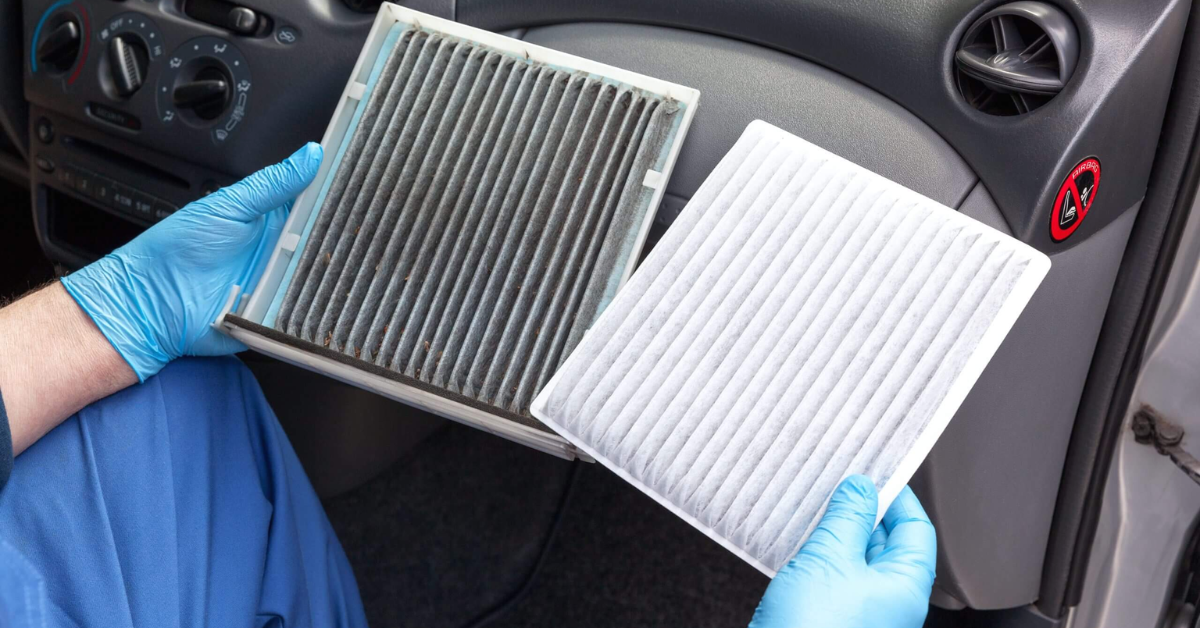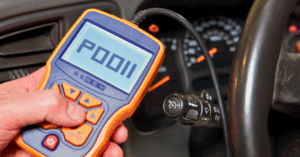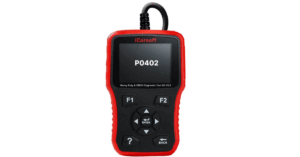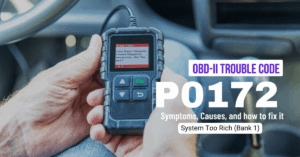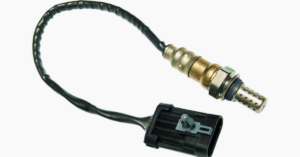When you encounter the P0113 trouble code, it indicates that your vehicle is experiencing difficulty measuring the air temperature entering the engine. This occurs when the intake air temperature (IAT) sensor sends a high voltage signal, often around 5 volts, which may correspond to -40°C/-40°F. The sensor is typically located in the air intake path. It provides accurate readings to the engine control unit (ECU) or the powertrain control module (PCM), both of which manage the engine operation.
The error code suggests a potential issue with the IAT sensor or its circuit, which could be caused by damaged wiring or corroded connectors. This may also trigger other OBD-II codes, such as P0111, P0112, or P0114, indicating similar sensor or circuit problems. It’s essential to address these issues promptly to prevent further error codes and ensure your engine operates smoothly.
Importance of Intake Air Temperature
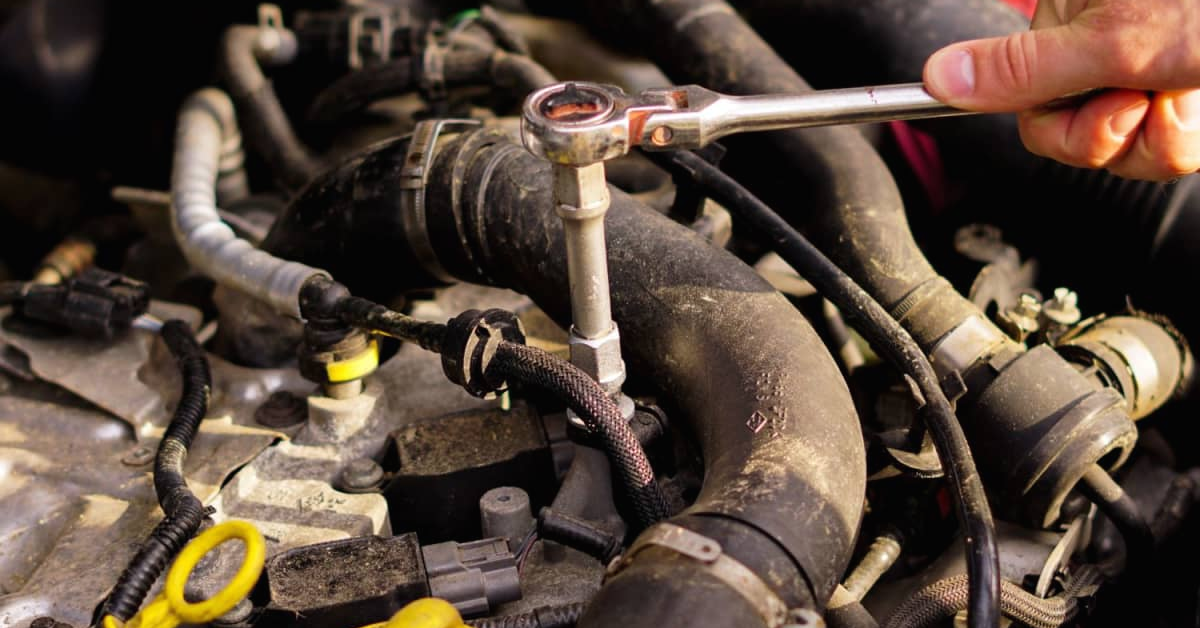
The intake air temperature plays a crucial role in engines by influencing the air-fuel ratios for optimal combustion. Cold air is denser and contains more oxygen, requiring more fuel for proper combustion, whereas warm air requires less fuel. The IAT sensor measures the air temperature entering the engine and helps the ECU maintain a perfect balance between fuel efficiency and optimal performance, ultimately reducing emissions.
A thermistor in the IAT sensor measures the resistance, which decreases as air temperature rises, leading to lower voltage. If the sensor detects an abnormal voltage, such as values above 4.7 volts, it may flag the reading as unrealistic, triggering a P0113 diagnostic trouble code. This can cause the engine to overcompensate, injecting too much fuel, leading to poor fuel economy.
How Serious is P0113?
The P0113 code is not typically an emergency that will leave you stranded, but it’s still important not to ignore it. If the problem worsens, you may experience engine misfires due to an incorrect air-fuel mixture that fails to combust properly, resulting in costly repairs. However, in most modern vehicles, a faulty IAT sensor usually doesn’t cause noticeable symptoms beyond the check engine light.
Thankfully, engine management systems in newer cars have backup strategies that help keep the engine running smoothly even when sensors fail. However, if left unresolved, the issue may lead to more severe consequences in the future, so it’s essential to address it promptly.
Can I Still Drive with P0113?
Yes, you can still drive with the P0113 code, but it’s essential to fix it as soon as possible. Driving with inaccurate temperature readings can lead to increased fuel consumption, cold-start issues, and even potential long-term engine damage. It’s best to address the issue early to avoid more serious problems down the line.
Common Symptoms of P0113
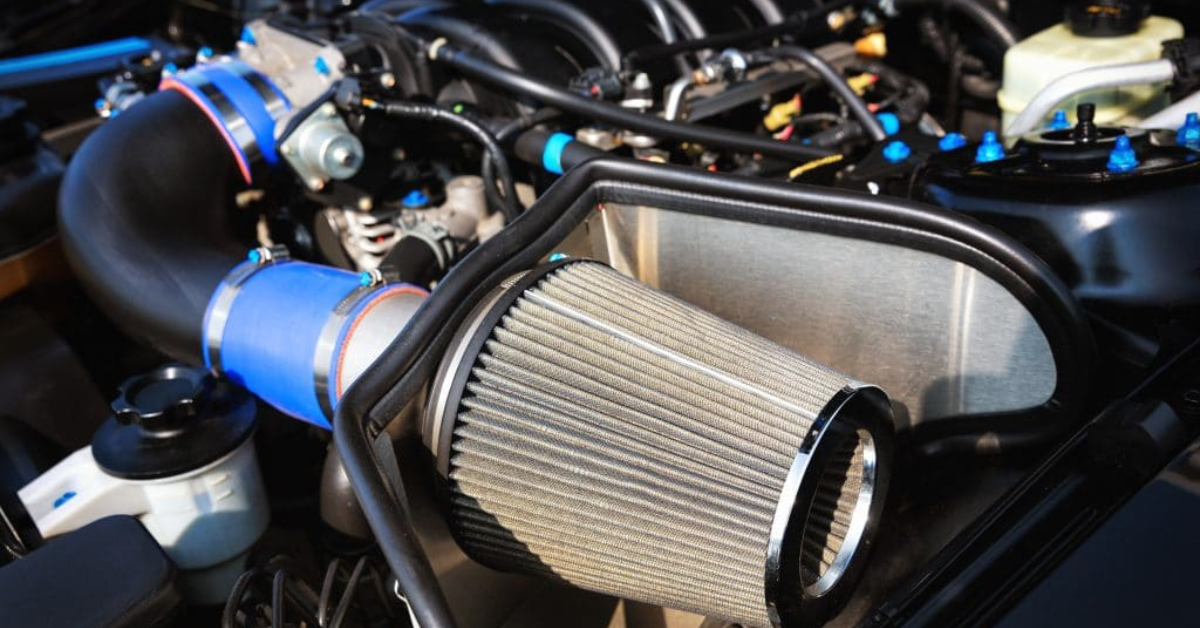
- Check engine light illuminated: The check engine light will turn on, signaling a problem with the IAT sensor or its circuit.
- Difficulties starting in cold weather: Since the IAT sensor measures the temperature of the air entering the engine, a faulty sensor can cause starting problems, particularly in colder weather, where the engine needs accurate temperature readings to adjust fuel delivery.
- Engine misfiring: A faulty IAT sensor can lead to an incorrect air-fuel mixture, resulting in misfires when the fuel fails to combust properly.
- Poor fuel economy: If the engine receives incorrect temperature readings, it can lead to excessive fuel being injected, resulting in higher fuel consumption and poor fuel economy.
- Poor acceleration: When the air-fuel mixture is off due to inaccurate readings, the engine struggles to perform, resulting in poor acceleration.
- ECM goes into failsafe mode: The ECM (engine control module) may enter failsafe mode when it detects issues with the IAT sensor. This is done to protect the engine from running inefficiently or causing damage.
- Engine pre-ignition problems due to lean-burn conditions: A faulty IAT sensor can cause lean-burn conditions, leading to pre-ignition problems where the fuel mixture ignites too early, potentially damaging the engine.
- Air-fuel mixture too lean or too rich: Incorrect readings from the IAT sensor can cause the engine to run on an air-fuel mixture that is either too lean (with too little fuel) or too rich (with too much fuel), resulting in reduced performance and efficiency.
- Idling poorly when cold: The engine may experience rough idling or stalling, especially when it’s cold, due to incorrect air temperature readings, which mess with the fuel mixture.
- Increased emissions: A faulty IAT sensor can result in an improper air-fuel mixture, leading to higher emissions and potential damage to the vehicle’s emission control system.
Common Causes of P0113
- Faulty IAT sensor: The IAT sensor itself may be malfunctioning, providing incorrect temperature readings to the Engine Control Module (ECM). This could be due to internal damage, such as a failed heating element, which affects its ability to function correctly.
- Wiring issues:
Images are for illustrative purpose only; credits belong to mehmedbasic.dk Problems with the wiring connecting the IAT sensor to the ECM can cause faulty readings. This includes broken wires, shorted wires, or corroded wiring, which can interfere with the sensor’s ability to transmit accurate data to the engine’s control system.
- Connector problems: Damaged, corroded, or moisture-filled connectors can disrupt the connection between the IAT sensor and the rest of the system, leading to inaccurate data being sent to the ECM.
- A dirty air filter can restrict airflow, leading to incorrect sensor readings. This could cause the IAT sensor to provide a false reading of the incoming air temperature, affecting the overall engine performance.
- Mass airflow (MAF) sensor issues: If the MAF sensor is faulty or malfunctioning, it can affect the air intake readings, triggering the P0113 code. The MAF sensor plays a crucial role in measuring the amount of air entering the engine, which in turn affects the IAT sensor readings.
- PCM failure: A failed Powertrain Control Module (PCM) can be a cause of P0113. If the PCM is not functioning properly, it may not interpret signals from the IAT sensor correctly, resulting in the error code being triggered.
- Clogged air filter:
Images are for illustrative purpose only; credits belong to FIXD A clogged air filter can prevent air from flowing smoothly into the engine, which affects the IAT sensor’s ability to read the air temperature accurately.
- Leaf or debris blocking the air intake: Even small debris, like a leaf, can block the mass air flow sensor or the air intake, causing incorrect readings from the IAT sensor and triggering the P0113 error.
- Malfunctioning ECM: Sometimes, the issue lies with the Engine Control Module (ECM), which may fail to interpret the data from the IAT sensor accurately. A malfunctioning ECM may cause it to trigger false error codes, including P0113.
- Vacuum leaks can impact the overall performance of the engine, including the IAT sensor and its readings. This can lead to incorrect air-fuel mixtures, which could contribute to the P0113 code.
- Other sensors causing performance impact: Occasionally, other related sensors or issues, such as those related to the air-fuel mixture or coolant temperature, can also affect the IAT sensor’s performance, triggering the P0113 code.
How Do I Know If There’s a Problem with the IAT Sensor?
If you’re facing an IAT sensor issue, you might notice the P0113 code triggering along with the check engine light being illuminated. This often leads to reduced fuel efficiency as the engine struggles to get the correct air-fuel mixture. You may also experience rough idling or engine stalling, particularly when starting the engine.
Another clear sign of a faulty IAT sensor is difficulty starting the engine, as incorrect temperature readings can cause improper adjustments to the air and fuel entering the engine.
How to Troubleshoot P0113
- Scan fault codes using an OBD-II scanner to identify related trouble codes (e.g., P0100-P0104, P0110).
- Look for clues regarding the IAT sensor, MAF sensor, or wiring issues.
- Check for loose, corroded, or faulty connectors and wiring that could cause open or short circuits.
- If the issue is with the IAT sensor, it may be malfunctioning—perform a diagnostic check with a mechanic or at a garage.
- Review technical service bulletins specific to your vehicle’s make and model.
- Inspect the wiring and connectors between the IAT sensor and PCM for any visible damage or issues.
- Perform a visual check and test the air temperature when the engine is warm.
- Test the resistance of the IAT sensor to check if it’s defective.
- Conduct manufacturer’s pinpoint tests for a more accurate diagnosis of the issue.
How to Fix a P0113 OBD-II Code
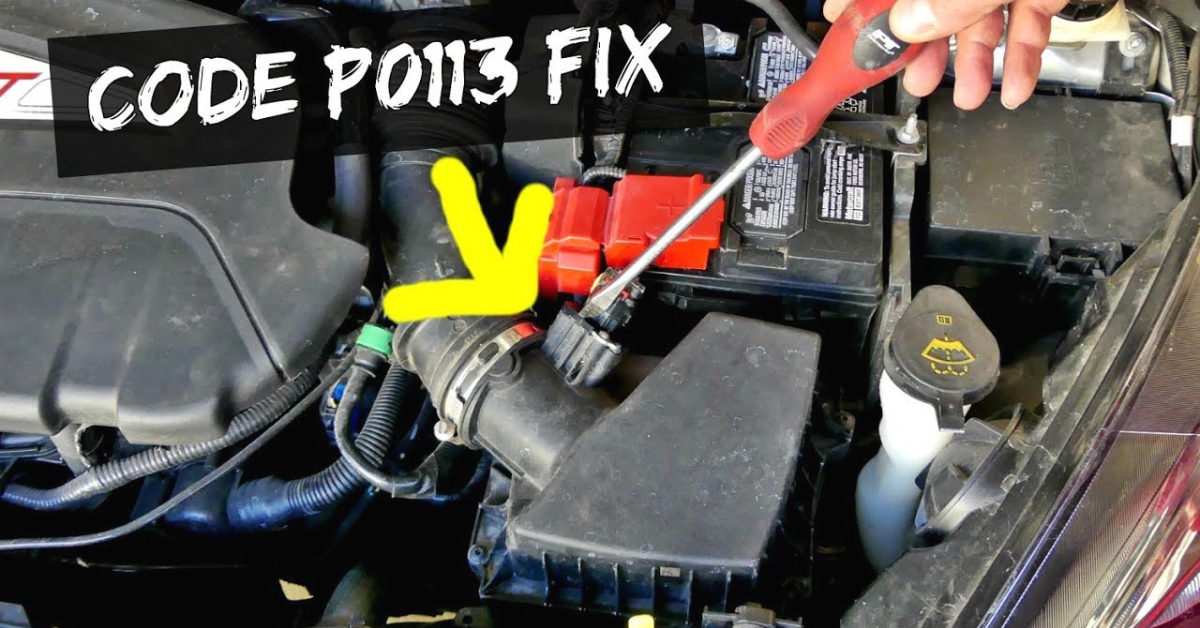
To fix the P0113 error code, start by replacing the faulty IAT sensor if it’s damaged. This is a relatively simple repair that a mechanic or even a knowledgeable DIYer can handle. If the issue is related to damaged wiring or connectors, repair or replace them accordingly, including any splicing needed. In some cases, the ECM might need to be replaced if it’s malfunctioning.
After addressing these fixes, perform a test drive to see if the fault code clears. Use an OBD-II scanner to reset the code and inspect the vehicle’s MAF sensor, ensuring proper airflow. Check for any vacuum leaks or clogged air filters, as these can also contribute to the issue. Finally, if the problem persists, investigate the wiring, including short circuits and broken wires, and check the PCM, though this is the least common cause.
How to Avoid a P0113 Code?
To avoid the P0113 error, prevent issues with the intake air temperature sensor by addressing any potential problems, such as internal shorting or damaged harnesses. Regularly maintain your vehicle and engine to keep them in good working order. This includes servicing your car routinely by changing the oil and filters, as well as checking wiring and connectors to ensure the vehicle remains in good running order.
Clear the Codes and Test Drive
Use a scan tool to clear fault codes and check if the code reappears. If it does, the issue is ongoing, and you should continue troubleshooting the potential causes. After removing the codes, drive the car for 15 minutes to let the engine warm up and observe its behavior. If the code reappears, this confirms the problem persists and further investigation is required.
Inspect the IAT sensor and its wiring for physical damage, corrosion, or disconnections. Also, check the air filter for dirt or debris. Use a multimeter and hair dryer to test the air intake temperature sensor; the resistance (Ω) should decrease as temperature increases. If the sensor doesn’t respond as expected, it may not be very accurate and may need replacement. For further troubleshooting steps, refer to the manufacturer’s guide.
How Much Does It Cost to Fix a P0113 Code?
Fixing the P0113 code can be inexpensive. Replacing the IAT sensor typically costs around $10 to $30 for the part. If the IAT sensor is integrated with the MAF sensor, you may need to replace the entire unit, which can cost $30 or more. The labor cost is usually minimal, as the repair typically requires only removing a few screws and replacing a connector.
Frequently Asked Questions
How to fix a P0113 code?
Replace the faulty IAT sensor, repair or replace damaged wiring and connectors, or replace the ECM if necessary.
Are IAT and MAF the same?
No, the IAT (Intake Air Temperature) sensor measures the air temperature, while the MAF (Mass Air Flow) sensor measures the amount of air entering the engine.
Where is the IAT sensor located?
The IAT sensor is typically located within the air intake path, often integrated with the MAF sensor or mounted in the air filter duct housing.
What is the P0113 inlet air temperature circuit high?
P0113 indicates that the IAT sensor is reading a voltage that is too high, suggesting a problem with the sensor or its circuit.

Mian Hashir is a passionate automotive enthusiast and the lead author at Car Garagee, a website dedicated to providing in-depth car reviews, maintenance tips, and the latest news in the automotive world. With years of experience in the industry, Hashir combines his technical knowledge with a love for cars to deliver insightful and engaging content. Whether you’re a car owner or a curious reader, Mian Hashir’s articles help readers make informed decisions, from choosing the right vehicle to understanding how to keep it in top condition.



